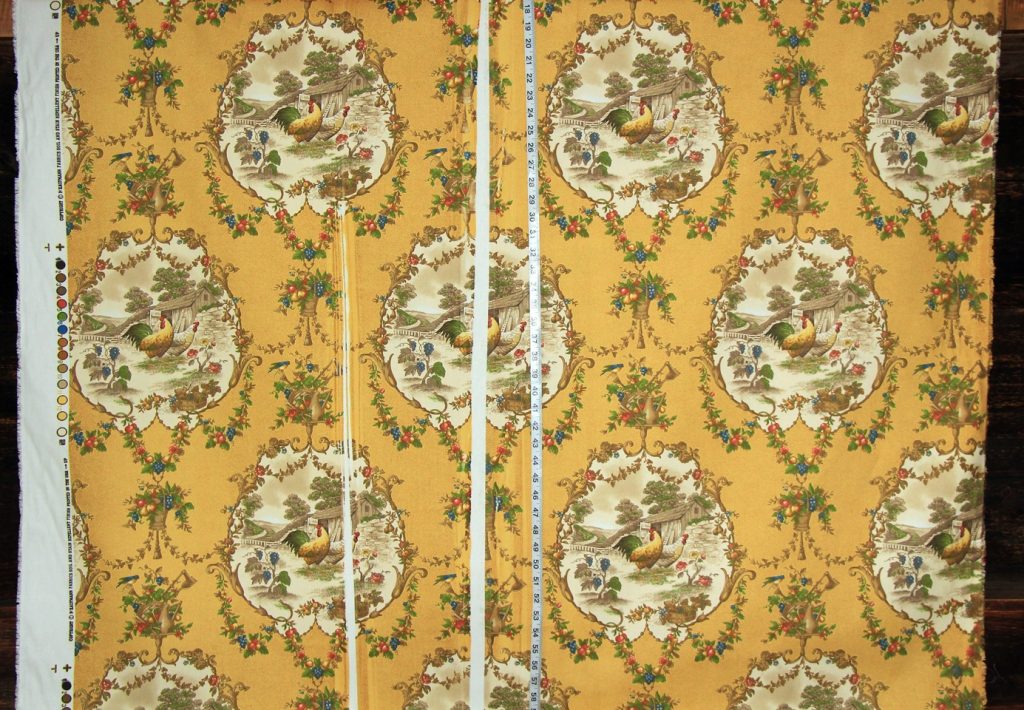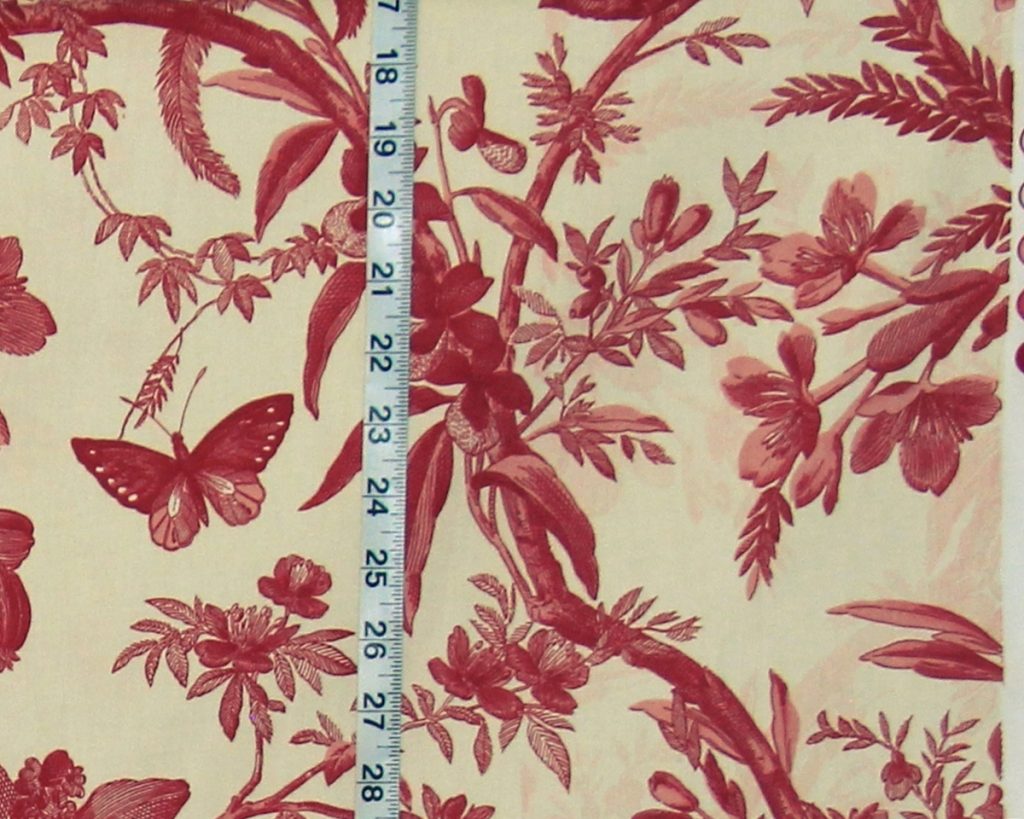First a bit about fabric seconds.

In the fabric world, what is considered first quality fabric, and what is considered a second? First quality fabric is when less than 1% of the fabric on a bolt has an issue. This can be a dye lot issue, a printing issue, a weaving issue, or a host of other problems.
Years ago, printed fabrics were printed by hand or screen printed by machine. The hand prints were literally printed using traditional screens, with dyes being forced through the screen, by hand, just the way artists do screen printing. Then mills became more mechanized, and the dyes were applied via machine. These methods changed again to what many mills use today, which are screens, with ink injected in them, that roll down the fabric. With each change came more speed, allowing the mills to turn out the same amount of fabric in less time.
Now, a variety of things can go wrong… the fabric may not be totally lined up, so that the print is not centered correctly, as in the picture above. Or there can be skips in the dying, as shown above.
On this P.Kaufmann Aviary Toile, a machine was not turned on in time to set the dye, and it has a shadow pattern on part of it.

Things don’t just happen in the print mill, things also happen in the weaving mill. Fabric is produced at a very fast rate. And, one of the by-products of this is called flock, which is small bits of the fibers that float in the air. They can be woven into the fabric or adhere to it anywhere along the production, in the printing, or the finishing. We had a bolt of our Venice fabric arrived, that literally weighed two – three times the normal, and was stiff as a board, it had gotten covered in the flock. We have also received fabric that has small colored threads woven into it, which have bled during the printing and finishing process.
In today’s world of computers, fabric is subjected to mechanical scrutiny. And the better companies really work at quality control. While we all know dye lots can vary, the have to be within a specific range to pass inspection. A fabric company does runs that are between 2500 yards and 4500 yards, and not every single bolt of fabric can be inspected! A few random bolts are usually chosen to be checked. The mills the wrap the bolts in plastic for shipping. Then it is up to fabric stores to check the fabric. And, as long as we inspect the fabric, and notify the company within a specified time, they will take it back.
But, when we run a fabric, we take it all, the first quality bolts, and the seconds as well.
One thing that is not a second, but is something any store deals with, is where the fabric is joined to another piece. Think about it, no fabric is fourteen football fields in length! So, before the printing mill even gets the fabric, the weaving mill serges the fabric ends together, and then ships the rolls of fabric to the printing mills. And the when the fabric is being printed, they print over the join. This is not a second, though people sometimes assume it is. We cut the fabric at the join, so no one gets it.
Our job is to make certain people get first quality fabric. We really inspect fabric before cutting. When we get to a flaw, we cut on it, and remeasure for the order. Which means we often have odd lengths of fabric hanging around. If they are longer than how we sell the fabric, that is not a problem. But, if it is shorter than the normal cut for that fabric, we classify it as a remnant. And, if it is a popular fabric, where we go through many bolts of that pattern, can get a pile of them due to the end of bolt pieces.
Our goal for the next month is to get all second quality fabrics and remnants listed. This is extremely time consuming, as all fabrics have to be photographed, measured, and listed. And, if it is a second, like the yellow County Fair above, we have to decide how to cut it so it makes sense for people. If it is like the Aviary Toile above, we have to note the flaw, and how much of the pattern will be lost.
You might wonder why anyone would have wanted the County Fair shown above. Well, we sold it in 45″ increments, so that people got two of the medallions on the right side, one above each other. It was fine for those doing pillows, napkins, or runners! The misprint on the Aviary Toile runs about 7″ in from the print edge. So, it is fine for everything, just less wide.
The seconds and the remnants are priced to move. So, if you have been looking for less expensive fabric, keep checking the second category and then remnants. It is going to take a while to get them all on, but it is, like everything, a work in progress!
See the remnants and seconds in our
And, don’t forget to sign up for our newsletter,
the sign up is available at the bottom of the page.
________________________________________________
